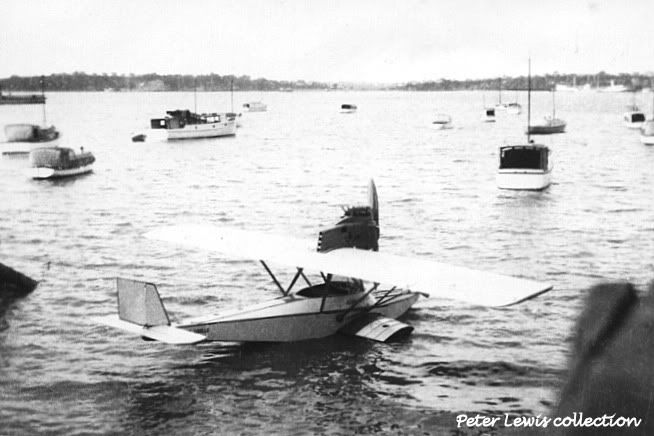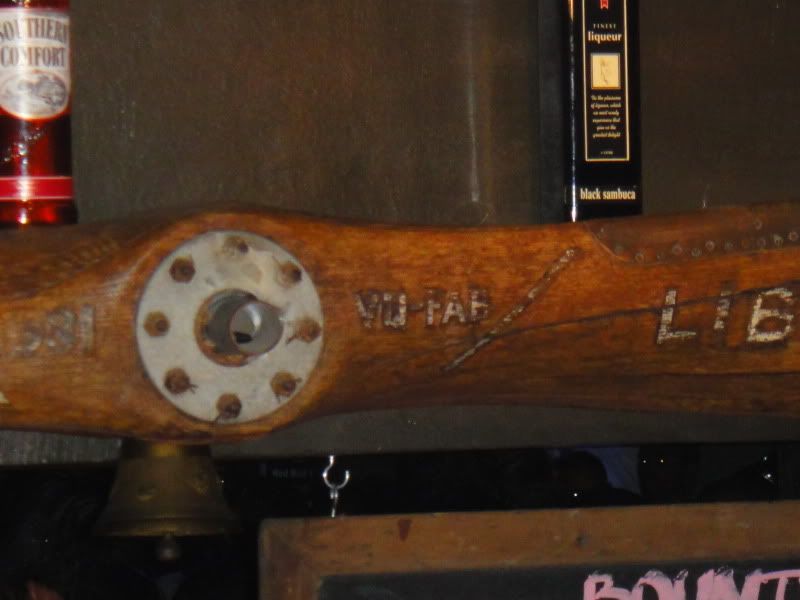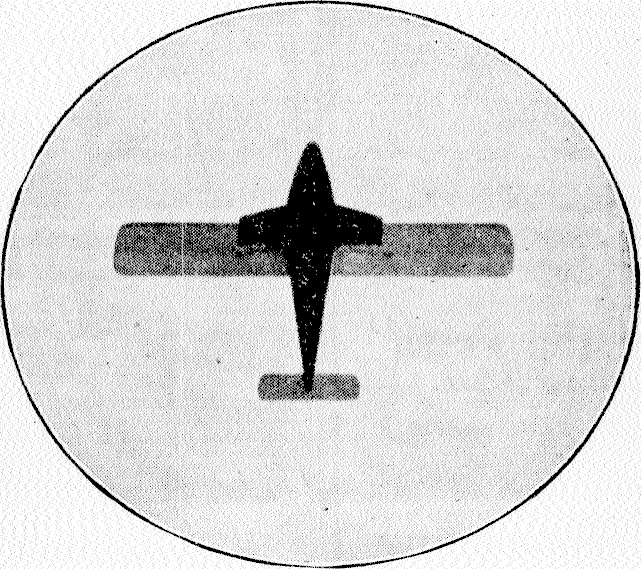|
|
Post by contourcreative on Jan 9, 2009 7:29:19 GMT 12
A couple of these little Flying Boats were bought by Aerial Services Ltd, with one of them crashing on a test flight in December 1930.
I've never seen any pictures of these airplanes in NZ anyone have anything?
|
|
glycol
Squadron Leader
  
Posts: 103
|
Post by glycol on Jan 9, 2009 16:08:45 GMT 12
There was one in the roof of a timber supplier in Suva by the name of Marlow. This was in the mid 1960s. He apparently had got it from NZ and used it to fly around the Islands. I tried to purchase it from him but he wasn't interested. He still had the paddle on the wall of his home.
I understand from his nephew that Dornier heard about it later and got it off him. In return the family were given a beautiful model of the aircraft. Last I saw of the model was in the home of Herb Marlow when he was the rep for Air NZ in Lautoka.
|
|
glycol
Squadron Leader
  
Posts: 103
|
Post by glycol on Jan 9, 2009 21:10:27 GMT 12
The History of NZ Aviation says that only one of the three seat Dornier DO12 Libelle flying boats was assembled and flown from Mechanics Bay In Oct 1929 as ZK-ABI. It was the first all metal aircraft flown in NZ. Its servce life was short ; it went into a spin and crashed into the sea off Milford Beach on 12 Dec.1929 killing the pilot,Capt.Don Harkness and and the company engineer ,C.F.Goldsboro.
The remaining Libelle was shipped to Fiji and became VQ-FAB, later-after many years storage being reclaimed by Dornier and restored to full display condition in Germany.
|
|
glycol
Squadron Leader
  
Posts: 103
|
Post by glycol on Jan 9, 2009 21:16:03 GMT 12
|
|
|
|
Post by Peter Lewis on Jan 10, 2009 20:45:54 GMT 12
Libelle c/n 101 ex D-1065 was assembled at Mechanics Bay and registered as ZK-ABI on 15November1929. It was fitted with a ADC Cirrus III engine and was the first all-metal aircraft to be flown in New Zealand. Test flights were undertaken by ex-WW1 aviator Don Harkness, who was then employed as a Auckland University lecturer, starting on 17November29. There were apparently some trim problems with the airframe, and prior to a test flight on the 12th December a large rock was placed in the airframe as ballast. The aircraft took off from Mechanics Bay and flew at low level across the Waitemata harbour to the north shore. Near Milford Beach the aircraft was seen to enter a steep spin and crash into the water. Harkness and passenger company engineer Goldsboro were killed and the aircraft destroyed. Speculation was that turbulence had caused the rock to shift, and this had made the aircraft uncontrollable. ZK-ABI at Mechanics Bay in late 1929 - 'AERIAL SERVICES" was painted under the cockpit, 'DORNIER LIBELLE" near the tail:  This was the end of Aerial Services Ltd. The second Libelle c/n 117 spent time in storage (it was never flown in New Zealand) and then went to Fiji (together with some recovered parts from ZK-ABI) where it was assembled and registered as VQ-FAB on 15September1930 by Mr Alf Marlow who was in business as Fiji Builders Ltd. Mr Marlow used the aircraft to fly around from Nausori around to his various building contracts in the Fijian Islands until the aircraft was damaged in a tropical storm in March 1931 (an active life of only a few months!). Not repaired after this incident, the aircraft spent years in storage - I have a note that it was at a local Technical College at one stage - until the Dornier Company bought it back in 1970 for the German Tecnological Museum at Munich. . . . and a quote from a message board: " The chap's name I remember was Alf Marlow who owned once and operated one of the Dornier Libelle flying boats that came to New Zealand in the 30s. The rare aircraft was snapped up for a very big price in the early 70s when they found out that Marlow had it stored in Suva. Marlow was in the building business and used the Libelle to carry timber out to the islands. He used a lot of Fijian native labour on many of the outer islands and picked up stories about aviation from them as he was naturally interested in them. Marlow was like most of us in the aviation game had an intrigue about aeroplanes and there owners and pilots. He died in the late 70s. " |
|
|
|
Post by contourcreative on Jan 11, 2009 6:50:36 GMT 12
Peter, Glycol thanks for this so much. We'll be designing a paper model of this little Dornier very shortly and probably do a postcard at some stage as well. Here's the Fiji Dornier's final resting (or is that 'hanging'?) place..... www.seawings.co.uk/DoLibelleWRgal.htm |
|
|
|
Post by Radialicious on Feb 27, 2011 21:59:09 GMT 12
Spotted in Fiji about three days ago...   |
|
|
|
Post by Peter Lewis on Feb 28, 2011 8:00:18 GMT 12
Wow! That's a real artifact.
Makes hanging out in bars a legitimate aviation research activity.
|
|
|
|
Post by chinapilot on Mar 1, 2011 12:58:08 GMT 12
...thought it might be one of those photos where you miss the obvious [1st photo,left hand background.. :-)]
It seems it didn't fly much if at all in Fiji...only reason I say this is that when I was living there in the mid '70s the subject came up amongst a lot of old timers there and seem to recall that it may not have even been assembled.
|
|
|
|
Post by youngmarlow on May 6, 2011 11:26:11 GMT 12
Please tell me where this photo was taken. Alf Marlow was my great grandfather and the Dornier is a key part of my family history. I'm a little horrified that this piece of history ended up strung up in a bar where (quite clearly from the photo and what's going on in the background) people don't realise its value to history and in particular, my family.
|
|
|
|
Post by shorty on May 6, 2011 11:52:31 GMT 12
youngmarlow, are you by any chance related to Henry Marlow ex RNZAF? He was from Fiji and we were on the same recruit course and basic engineering course in 1967 .
|
|
|
|
Post by youngmarlow on May 6, 2011 12:56:29 GMT 12
Shorty - My grandfather was Eric Henry Marlow (Alf's son) and he would have been around his late 40's in 1967. I don't have the full details of the family tree as we are all spread over the world now and I'm still piecing them together, but if he was a Marlow from Fiji he's definately related. As far as I'm aware, there were 2 other sons of Alf, Ralph and Keith. Herb Marlow (mentioned in these posts) is my second cousin.
|
|
|
|
Post by shorty on May 6, 2011 13:45:23 GMT 12
No, that one sounds a bit old, the Henry I knew would be about 20 in 1967.I'll post a photo when I find them.
Thanks
|
|
|
|
Post by youngmarlow on May 7, 2011 22:40:12 GMT 12
Shorty - I've asked my father about Henry and yes, he's related. He is my fathers cousin.
|
|
|
|
Post by youngmarlow on May 11, 2011 12:32:34 GMT 12
Radialicious - I don't mean to be a pest but my father is keen to have the prop from the Libelle returned back to the family. We had no idea where it ended up and he made enquiries a few years back but didn't get anywhere. Please tell me, if you can, where these photos were taken so that I can try and get the ball rolling. Much appreciated.
|
|
|
|
Post by baronbeeza on Oct 7, 2015 20:28:13 GMT 12
I reckon that prop would be in the Bounty bar in Nadi. Brian Smith used to have the restaurant just down the road from Nadi airport heading into town. I would say the pics are from that location. I believe the bar has changed owners as well as location in recent years. The new restaurant is now at the end of the main street in Nadi town. I am sure many of the guys that worked at the airport would have sampled Brian and Veronika's hospitality and would know about the prop if it was indeed there. Brian was aviation friendly but I can't remember seeing that prop before. (Reading about Dorniers and Junkers engines here). www.event1001.com/restaurant-bar/fiji/nadi/the-bounty/5035/ |
|
|
|
Post by Peter Lewis on Jan 9, 2019 11:33:15 GMT 12
For no apparent reason, the morning NZ Herald newspaper published the story of this aircraft crash in yesterday's edition. |
|
|
|
Post by Dave Homewood on Oct 13, 2024 22:04:55 GMT 12
I just came across this very unusual angle.  AS AUCKLAND SAW IT.—The new Dornier Libelle flying-boat made its second flight over the City yesterday. The machine will probably undergo the official Government tests today. Sun (Auckland), 20 November 1929 |
|
|
|
Post by Dave Homewood on Oct 13, 2024 23:03:03 GMT 12
From the Ashburton Guardian, 13 December 1929
CRASH INTO SEA.
FLYING-BOAT LOST.
PILOT AND PASSENGER DROWNED
FATALITY AT AUCKLAND
(Per Press Association.) AUCKLAND, December 12.
A Dornier Libelle flying boat, piloted by Capt. Donald E. Harkness, who had as companion Mr C. F. Goldsbro, crashed into the sea off Milford at 5.40 this evening. The flying-boat sank and both occupants were drowned. . Their bodies were later recovered with the machine.
The flying-boat was imported about two months ago by Aerial Services, Ltd., an Auckland company registered this week, in which Mr Harkness, and his brothers had the main interest. It had made several flights in and about Auckland harbour.
Capt. Harkness, who was the son of the late Mr G. A. Harkness, inspector of schools at Nelson, was lecturer in civil engineering at Auckland University College. He served with the Royal Naval Air Force in the Great War, gaining the rank of captain, and won the Distinguished Service Cross for bombing a Zeppelin shed near Brussels. He was afterwards forced down in Holland and was interned, but paid a visit to New Zealand on parole in 1917, later returning to Holland.
He spent some time in America after the war and married an American girl. There are two young children.
Mr Goldsborough, who was aged 38, was engaged last week by the company as its engineer. He was a keen outboard motor enthusiast, and was well known as a motor expert. He lived as St. Helier’s Bay.
How the tragic accident happened is not known, and seeing that the only two who could tell are dead, it probably will never be known. Many residents of Devonport and Takapuna saw the flying-boat, as it flew fairly low from its base in Mechanics Bay over part of Devonport into Rangitoto channel. According to reports it was at a height variously estimated at 300 to 600 feet when the spectators were horrified to see it go into a spin when turning and plunge in a nose-dive into the sea. It sank immediately. Three or four small boats put out from Milford beach.
Two young men who rowed out in a dinghy could see the flying-boat beneath the surface, and dived overboard. They felt the arm of one man, but he seemed to be strapped to his seat. They could not release him. Later the water police arrived and eventually the flying-boat was dragged to the beach by a Harbour Board launch. It was then that Goldsbro’s body was also found in the machine. The right wing and rudder of the flying boat were badlv smashed and the pilot’s seat was wedged in the how of the boat, making it difficult to get the pilot’s body out.
STRENUOUS ATTEMPT AT RESCUE
RESOURCEFUL WOMAN WITNESS
AUCKLAND, This Day,
Comparatively few of those who saw the flying-boat as it approached the North Shore witnessed the actual disaster, trees and houses hiding it except to those who were on or near the beach.
Among those who saw the aircraft dive into the sea was Mrs Mclnnes. She was standing on the beach with another woman. It appeared to them that the engine stopped as the machine was turning, and they formed the opinion that the pilot intended to land. Then when the spin occurred they thought that the pilot was “stunting.” As the machine shot perilously near the water they realised that it was out of control. It was then that they heard two explosions as though the engine had back-fired, the second report coming from the engine when the flying-boat was near the water. Mrs Mclnnes rushed to the water’s edge and, after sending one of her children for help, launched a dinghy that was lying on the beach. While she was doing this two men arrived and jumped into the dinghy, accompanied by a boy. Then rowed rapidly to the scene of the tragedy, several hundred yards from the shore.
Part of the black hull was visible to those on the shore. One man who immediately obtained a pair of glasses plainly saw an arm reach up as though one of the trapped men was trying to lift himself up. The effort was apparently fruitless, for although he tried for several moments to extricate himself he sank back and disappeared as the hull subsided. When the first of the rescuers reached the scene the flying-boat was still afloat, but the weight of the engine was gradually submerging the forepart. The cockpit of the upturned craft was several feet below the surface of the water.
The first attempts at rescue were made by Messrs Stanley Bacon and Harry Abbott, members of the lifesaving team, who had gone out in swimming costumes. Diving under the flying-boat they attempted to release one of the men by grasping his arm, but although he seemed to move a little all their efforts were insufficient to set him free.
At this time it was not known whether anyone had been in the aircraft besides the pilot, and those who were attempting the rescue were able to detect the presence of only one man. A life-saving line which had been brought out in one of the boats was attached to the tail of the wrecked craft when it became apparent that the occupant or occupants could not he released, and an attempt was made to tow the flying-boat to the shore. This was soon seen to be impossible as it began to sink more rapidly and as a final resort those in swimming costume tried to right it by putting their weight on one wing. In five or ten minutes from the arrival of the rescue parties, the flying-boat had sunk in about 30 feet of water. Fortunately its position was definitely located by the attached rope.
Properly organised efforts to release the airmen from the wrecked flying-boat became possibly only with the arrival of the Harbour Board launch Orore, in command of the harbour-master. Considerable difficulty was experienced in raising the submerged flying-boat, and when this had been accomplished, nearly two hours after the crash had occurred, it was not possible to release the pilot and his companion until the machine had been taken on to the beach.
The flying-boat was badly damaged. One propellor blade was snapped off short and the whole of the nose had been driven back on to the cockpit. A wing had fallen in and the bodies of the two men were locked beneath the heavy weight of wreckage. The work of extricating the bodies was particularly difficult and the crowd which persisted in thronging close to the aircraft made the task no easier.
When the wing was lifted it was found that a heavy boulder had lodged between it and the men beneath. The nose of the machine had also locked the men securely in place, so that they had no hope of freeing themselves after the crash. On being removed, from the damaged machine, the bodies were taken to a near-by shed, later being taken to the mortuary at the Auckland Hospital.
|
|
|
|
Post by errolmartyn on Oct 14, 2024 9:23:34 GMT 12
A 562-page autobiography about Donald Ernest Harkness - A World War I Adventure: the life and times of RNAS pilot Donald E. Harkness was published by the family in about 2014.
Errol
|
|



